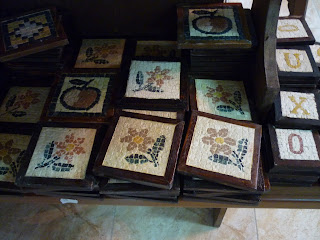Tourism is a business that
works to attract people with the extraordinary, sold as authentic cultural
attributes. This commodification is
termed “staged authenticity.”[1] A typical critique complains that
conventional tourism is inauthentic, artificial, exploitative, commercialized.[2]
Seeking authenticity, some attempt to escape mass tourism. Others enjoy the created
authenticity of the tourism business nonetheless. A postmodern critical
perspective undermines the relevance of authenticity, for, many prefer inauthentic representation as a more
comfortable and reliable experience. Furthermore, in refusing the notion of
uniqueness and universal truths, postmodernity denies authenticity to appear in
a one-and-only form.[3]
The Bedouin locals
in Petra became exposed to tourism when the site opened for the public. They
entered tourism business, offering carriage, donkey and camel rides and selling
souvenirs. Many dress up in remarkable clothing with accessories. This is their
way to attract tourists – and it works!
So, is this the
quintessence of inauthenticity? On
the contrary, I call it an authentic
and effective tourist attraction. It is authentic in the sense that this is
exactly the kind of tourist attraction that fits to real authentic tourist experiences.
Obviously this
'Jack Sparrow dress-style' is an imitation, contrary to the definition of the
authentic being of undisputed origin and genuine.[4]
Yet, in combination with the Bedouin-camel, it becomes an original style for the Bedouin. In the sense that “authenticity is constantly created and reinvented,”[5]
the authentic Petra-Bedouin clothing is
influenced by tourism. It is the Bedouin’s daily ‘work clothes’ so to speak,
which makes it in the present day – authentic.
One may argue we
were fed the commodified version of Jordanian culture. However, this
commodification does not make our cultural experience less authentic. It depends what we expect from authenticitiy. There is
no single, authentic form of experience – but a multitude of authentic
experiences.[6]
Upshot:
Authenticity is relative.
[2] Luis-Manuel Garcia,
'Techno-Tourism And Postindustrial Neo-Romanticism In Berlin's Electronic Dance
Music Scenes (Draft)', University of
Groningen (2015).
[4] Dictionary.com, 'The
Definition Of Authentic', last modified 2015, accessed September 5, 2015,
http://dictionary.reference.com/browse/authentic.















